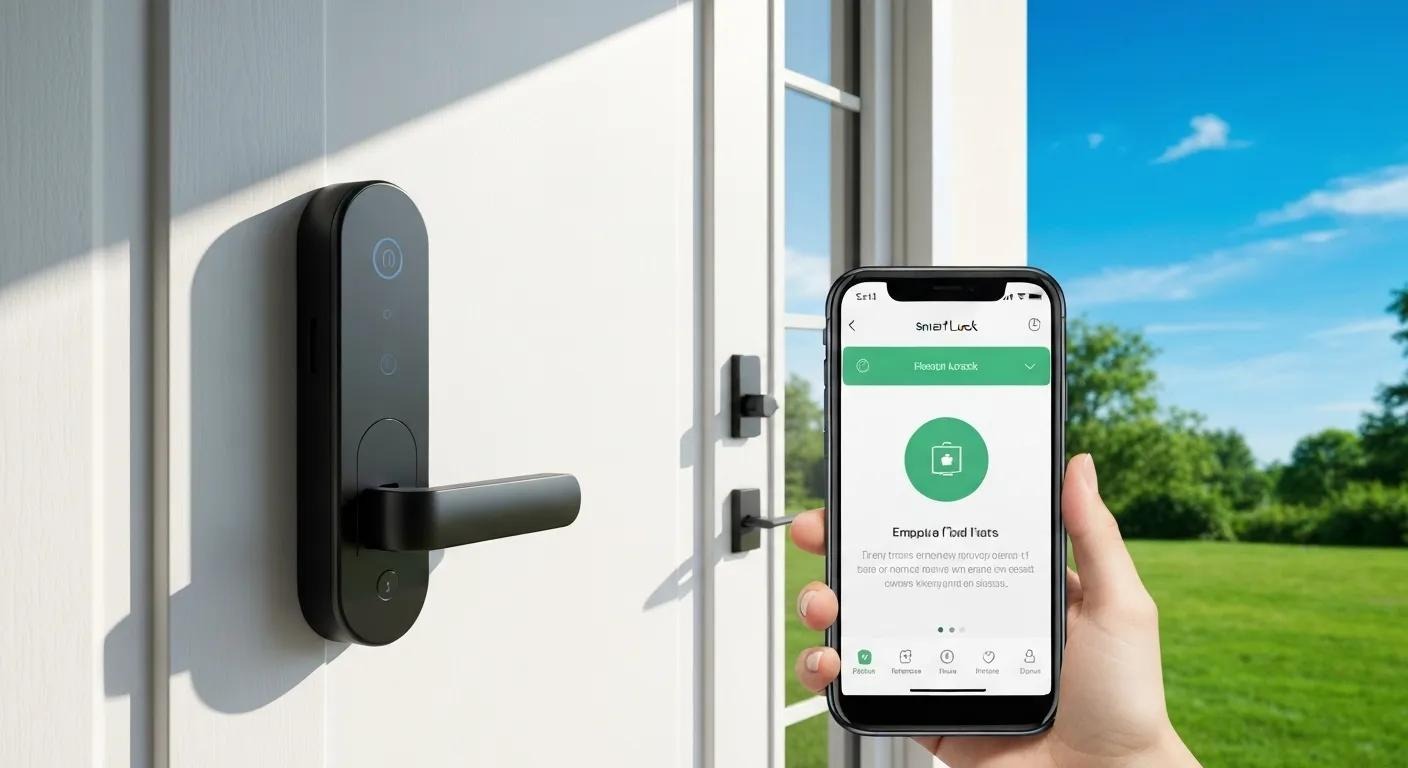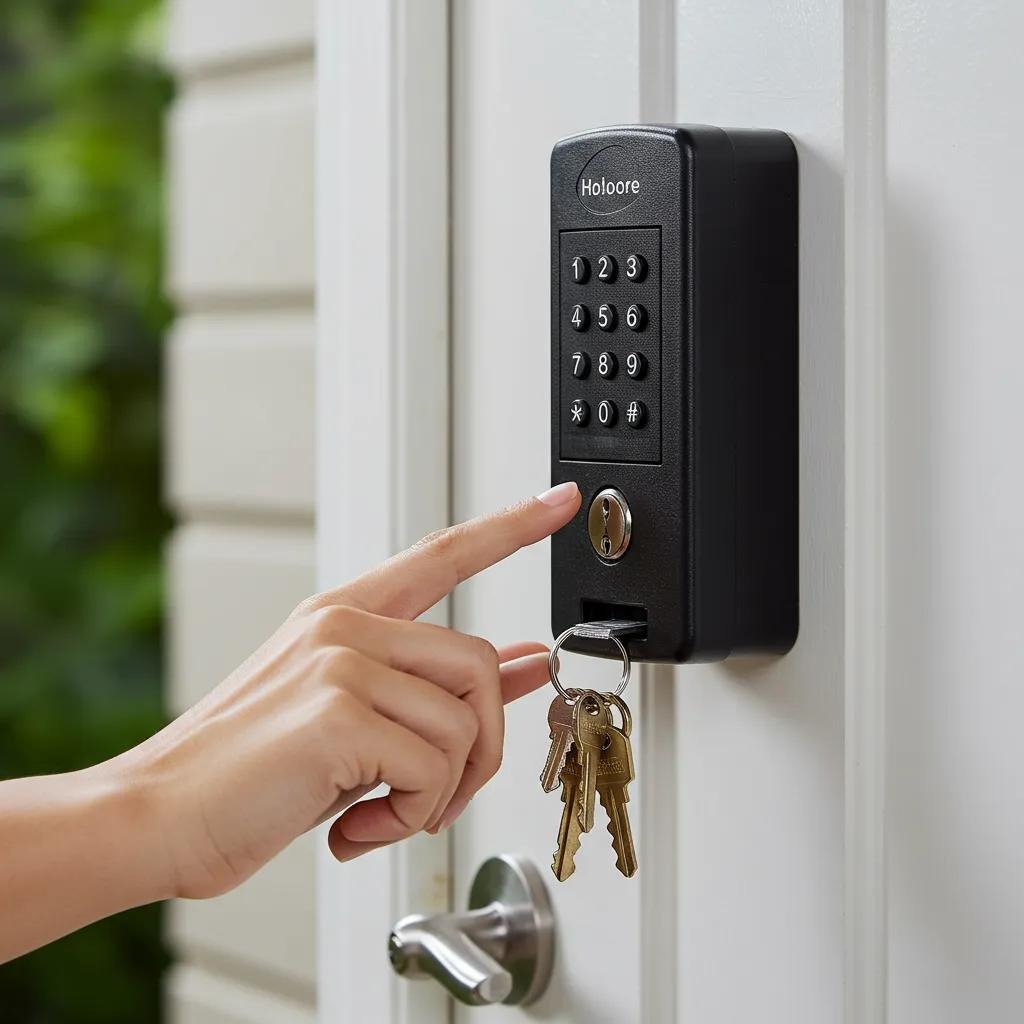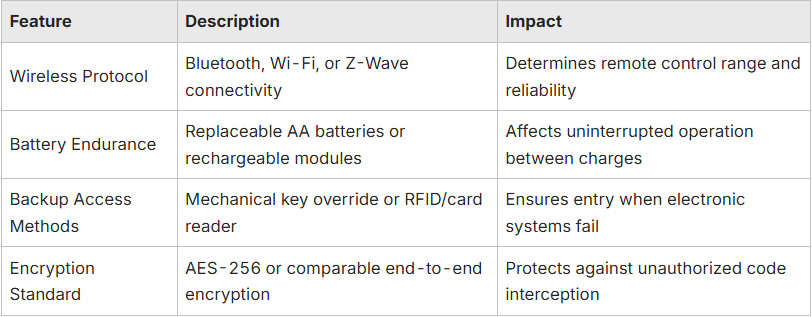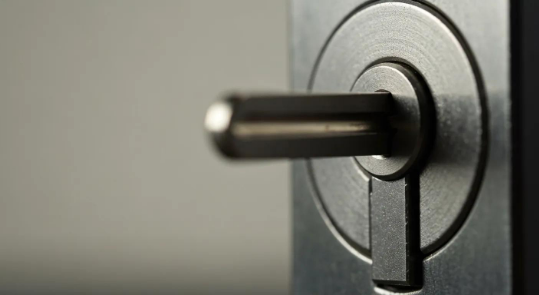10 Essential Tips to Prevent Being Locked Out

Preventing a home lockout begins with intentional habits and the right tools, and mastering these strategies reduces stress and costly emergency calls. In this guide, Lostkey Locksmith shares 10 tips to prevent being locked out, covering daily routines, spare-key planning, smart-lock integration, professional support, and behavioral safeguards. You will learn how to establish consistent lock-checking routines, maintain hardware, leverage spare-key solutions, maximise smart-lock features, involve trusted contacts, and design a comprehensive prevention plan. We’ll explore when to engage a locksmith for proactive service, identify common errors that trigger lockouts, and outline special considerations for travel or rentals. By following these layered insights like from simple checklists to advanced technology, you’ll secure uninterrupted access to your home and reduce the chance of an unexpected lockout.
What Are the Most Effective Home Lockout Prevention Tips?
Home lockout prevention refers to proactive measures designed to ensure you always retain access to your residence by combining behavioral practices, hardware upkeep, and access technology. This approach reduces emergency disruption by aligning daily habits with lock functionality. For example, pairing a routine key-pocket check with scheduled lubrication of mechanical components. An immediate benefit is minimised downtime and stress when leaving or entering your home. Understanding these three core pillars like establishing routines, performing regular maintenance, and adopting electronic access solutions lays the foundation for lasting lockout protection and points to specialised sections on spare keys and smart devices.
Maintaining semantic continuity, the next section examines how a steadfast daily routine anchors these prevention pillars and forms the first line of defense against accidental lockouts.
How Can You Establish a Routine to Avoid Lockouts?
A consistent daily routine integrates lock-checking into your departure and arrival habits, ensuring keys never stray from your possession. Begin each morning by verifying that keys rest in a designated pocket or hook and repeat a similar check before bedtime. Setting phone reminders or placing visual prompts near doors strengthens this habit by triggering action on autopilot and reducing reliance on memory. For example, hanging a small note on the interior door reminds you to confirm both door latches and key placement before stepping out. This behavioral anchor not only prevents oversights but also primes you to notice hardware issues, directly linking routine establishment to maintenance awareness.
Embedding these cues into everyday workflows naturally leads to an inspection schedule, which we explore in the following section on lock maintenance.
Why Is Regular Maintenance of Locks Important?
Regular maintenance of locks involves inspecting, cleaning, and lubricating mechanical components to preserve smooth operation and prevent jams that cause lockouts. Over time, debris and corrosion accumulate inside cylinders, hindering key insertion or rotation and increasing the risk of a door failing to unlock. For instance, applying graphite or a silicone-based lubricant every six months restores internal alignment and reduces friction. Performing visual checks on latch alignment and tightening loose strike-plates ensures consistent engagement between door and frame. By keeping locks in peak condition, you avert hardware-related lockouts and prolong the lifespan of your door security.
Preventive maintenance paves the way for combining mechanical reliability with electronic access solutions, which we’ll address next in our smart-lock discussion.
How Does Using Smart Locks Improve Home Security and Prevent Lockouts?

Smart locks integrate digital authentication and remote management to eliminate dependence on physical keys, offering code entry, smartphone access, and biometric unlocking that forestall traditional lockout scenarios. By replacing or supplementing mechanical cylinders with electronic actuators, these devices provide multiple access pathways like guests enter via one-time codes, homeowners unlock with a mobile app, and emergency services can use master credentials. For example, geofencing features automatically unlock the door when you approach and re-lock when you depart, reducing forgetfulness. The benefit is twofold: enhanced security monitoring with audit trails and seamless entry regardless of key misplacement.
Shifting from built-in routines and hardware upkeep, the next section focuses on strategic use of spare keys as an additional safeguard.
How Can You Use Spare Keys to Avoid Getting Locked Out?
Spare keys offer a simple yet effective backup access method by providing additional entry points when primary keys are unavailable. Storing duplicates in controlled locations or entrusting them to reliable individuals ensures you can regain entry without drilling or forced entry. For instance, leaving a coded lockbox keyed to a personal combination near the door offers both concealment and quick access for household members. Balancing accessibility with security through one-way hiding spots or secure containers prevents unauthorised retrieval while safeguarding against accidental lockouts.
Exploring these options further, the first strategy is selecting safe and accessible hiding spots for your spare keys.
What Are the Best Spare Key Hiding Spots That Are Safe and Accessible?
Identifying secure hiding spots for spare keys requires blending concealment with ease of retrieval when needed. Common recommendations include placing a flat magnetic key holder under a porch beam, tucking a key inside a weatherproof rock near a garden path, or hiding it behind a secured siding panel. Each location conceals the key from casual discovery while remaining within a few steps of the entry door. When choosing spots, ensure they are dry, protected from rust-inducing moisture, and inspected periodically to confirm the key’s condition. Well-chosen hideaways provide immediate access in emergencies without drawing attention.
Should You Leave Spare Keys with Trusted Neighbors or Family?
Entrusting spare keys to a reliable neighbor or close family member creates a human backup that complements hidden keys and smart-lock features. By notifying a neighbor about your usual schedule and emphasising confidentiality, you ensure rapid assistance when lockout strikes. The mechanism involves zero-drill entry and you simply contact your contact for hand-over, avoiding damage or waiting. This approach benefits households with irregular routines or multiple occupants, as everyone gains a fail-safe point of contact. Establish clear guidelines for access times and retrieval methods to maintain security while improving access resilience.
Building on personal networks, secure lockbox solutions add a technology-driven dimension to spare-key management.
How Can You Use a Secure Key Lockbox for Spare Keys?

A secure key lockbox is a weatherproof metal container affixed near the entry, accessible only via a programmable code or combination dial. This device stores spare keys behind reinforced steel and tamper-resistant locks, preventing casual theft while granting authorised users quick entry. Choose a lockbox with reinforced hinges, anti-pry edges, and a minimum 4-digit combination to deter guessing. Mount it at waist height for easy code entry and inspect the seal regularly for moisture ingress. Integrating a lockbox provides a controlled environment for backup keys without burying them out of reach, enhancing both convenience and security.
Having covered spare-key strategies, we now turn to advanced electronic access by exploring smart-lock benefits in depth.
What Are the Benefits of Installing Smart Locks for Home Security?
Smart locks offer multifaceted advantages: they enable keyless entry, real-time access monitoring, remote lock control, and integration with home automation systems to prevent lockouts and strengthen security. By replacing traditional deadbolts with electronic actuators, homeowners gain the ability to generate temporary codes for guests, receive notifications on door activity, and automate locking schedules. For example, setting a nightly auto-lock at 10 PM ensures doors secure themselves even if you forget. These features foster peace of mind, reduce emergency callouts, and allow digital audit trails that track who enters and when, key for busy families or rental properties.
Beyond remote convenience, smart locks deliver specific lockout prevention benefits and selection criteria, which we’ll examine in the next subsections.
How Do Smart Locks Help You Avoid Lockouts?
Smart locks prevent lockouts by decoupling access from physical keys and offering multiple authentication methods such as numeric codes, fingerprint sensors, or smartphone apps that eliminate single-point failures. Should your phone battery die, many models include mechanical key overrides hidden beneath a tamper-resistant cover. In practice, geofencing features unlock the door as you approach, while loss of signal can be mitigated by pre–programmed code entries. This redundancy ensures at least one access path remains available, dramatically reducing accidental lockouts compared to purely mechanical systems.
The integration of smart locks into smart home ecosystems represents a significant advancement, fundamentally altering the paradigms of security and convenience.
Smart Locks: Advancing Home Security and User Convenience
The integration of smart locks into smart home ecosystems represents a significant advancement, fundamentally altering the paradigms of security and convenience. These intelligent locking mechanisms have superseded conventional systems, initiating an era where digital authentication and sophisticated functionalities redefine how individuals secure and interact with their residences. Smart locks afford homeowners unprecedented control and accessibility, obviating the necessity for physical keys and introducing enhanced security through encryption and biometric authentication. Underscoring their key function within smart homes, the publication emphasises the capability of smart locks for remote access monitoring and management.
Building on these functional layers, selecting the right feature set is important for reliability and long-term satisfaction.
What Features Should You Look for in a Smart Lock?

Evaluating these attributes secures both digital and physical reliability, guiding you toward models that align with your household needs.
Can Smart Locks Be Integrated with Locksmith Services for Emergency Access?
Yes, many smart-lock manufacturers partner with locksmith professionals to offer emergency code resets and manual override installations when electronic access fails. Lostkey Locksmith, for example, provides on-site programming of master codes and damage-free mechanical disengagement should the battery die or software glitch occur. This service integration combines digital convenience with professional support, ensuring you can call for immediate assistance rather than resorting to destructive entry methods. Coordinating between your smart-lock supplier and a certified locksmith cements a comprehensive lockout solution.
This paper introduces a smart digital locking and unlocking system designed for home door security.
A Smart Digital Locking System for Enhanced Home Security
This paper introduces a smart digital locking and unlocking system designed for home door security. The Internet of Things (IoT) facilitates the integration of devices capable of inter-device communication and user interaction, thereby enabling remote control and monitoring of diverse home functionalities, including door lock management. The objective of this system is to augment home security by offering a secure and user-friendly mechanism for managing property access.
With smart-lock strategies in place, you’ll know when professional locksmith intervention further enhances lockout prevention and resolution.
When Should You Contact Locksmith Services to Prevent or Resolve Lockouts?
Contacting locksmith services proactively for rekeying, lock upgrades, or master-key system design prevents future lockouts by ensuring your hardware and security architecture remain up to date. Reactive calls for emergency entry become quicker and less costly when you already have a relationship and service plan in place. Lostkey Locksmith offers scheduled inspections to diagnose wear, tighten strike plates, and recommend hardware replacements before failure. By engaging professional expertise at regular intervals, you minimise the likelihood of sudden mechanical jams or ineffective security that leads to lockouts.
After defining preventive partnerships, let’s explore how these services directly help avoid future incidents.
How Can Professional Locksmiths Help You Avoid Future Lockouts?
Professional locksmiths deliver preventive services such as lock rekeying after lost-key incidents, installation of weatherproof strikes, and reinforcement of door frames to prevent misalignment. By analysing door swing, latch tension, and cylinder condition, they prescribe targeted maintenance or hardware upgrades that preempt mechanical failures. For instance, installing a high-tolerance deadbolt reduces friction in cold climates, ensuring smooth operation throughout temperature swings. These specialied adjustments extend lock lifespan and reinforce seamless access, translating into fewer emergency calls.
Complementing scheduled maintenance, locksmiths also provide rapid responses when lockouts occur unexpectedly.
What Emergency Locksmith Services Are Available for Lockouts?
Emergency locksmith services cover non-destructive entry, lock picking, cylinder drilling, and lock replacement when damage is unavoidable, all delivered with prompt response times. Available 24/7, technicians carry professional toolkits to address common deadbolt jams, broken key extractions, and malfunctioning smart-lock batteries. Common emergency offerings include:
- Non-destructive lock picking to preserve hardware integrity
- Broken key extraction from internal cylinders
- On-site key cutting and programming for electronic locks
- Temporary boarding for damaged doors following forced entry
These solutions restore access swiftly and safely, minimiing property disruption.
How to Choose a Reliable Locksmith for Lockout Prevention?
Selecting a trustworthy locksmith involves verifying licensing, insurance coverage, customer reviews, transparent pricing, and clear service guarantees. Request proof of professional affiliation or bonding to ensure accountability and review local testimonials that highlight punctuality and workmanship. Ask for written estimates before service and inquire about warranties on parts and labor. A reputable locksmith like Lostkey Locksmith demonstrates industry credentials, provides detailed service scopes, and commits to damage-free techniques, attributes that guarantee both reliable access and long-term prevention.
Armed with professional support insights, you can explore additional do-it-yourself and behavioral strategies to further reduce lockout risk.
What Are Additional Tips to Avoid Getting Locked Out?
Beyond keys and professional services, additional tips such as adopting keyless entry systems, educating household members, and planning for special scenarios broaden your prevention net. These strategies layer convenience and awareness, ensuring everyone in your household follows best practices and that contingencies exist for unique circumstances like rentals or travel. Implementing a mix of technological, educational, and planning measures cements a comprehensive approach to lockout prevention.
Next, we’ll examine how keyless entry systems complement existing measures.
How Can You Use Technology Like Keyless Entry Systems?
Keyless entry systems use numeric codes, RFID fobs, or biometric identifiers to grant access without physical keys. Installing a keypad lock or biometric reader eliminates lockouts due to forgotten keys and allows you to change access credentials instantly when needed. For example, assigning unique codes to each family member enables individual activity tracking and rapid deactivation if credentials are compromised. Integrating these systems with home automation can trigger door unlocking when you arrive and send alerts on failed entry attempts, adding both convenience and security.
Equally important is ensuring that everyone in the household understands prevention practices, which we explore next.
Why Is It Important to Educate Household Members About Lockout Prevention?
Educating all household members creates a shared responsibility for maintaining access routines and understanding emergency procedures. Holding a brief orientation on lock-checking habits, spare-key locations, and code-generation protocols ensures everyone follows the same prevention plan. Encouraging open communication about schedule changes or lost keys prevents surprises and reduces risk. For example, posting a simple checklist near the exit door reminds everyone to secure keys and confirm door latches before leaving. Shared awareness closes gaps that a single individual’s oversight might create.
When you expand prevention to include travel or rental situations, additional considerations apply.
How Can You Prepare for Lockouts When Traveling or Renting?
Preparing for lockouts in travel or rental contexts involves securing local key support, digital check-ins, and emergency contacts. For short-term rentals, confirm host-provided key procedures, request backup access codes, and save local locksmith contacts. When traveling abroad, arrange a local trusted friend or building manager to hold a spare key or code, and store digital copies of credentials in a secure app. For extended rentals, invest in your own code-enabled lock or portable lockbox. Proactive planning for non-standard environments ensures your access remains uninterrupted regardless of location.
With additional tips in place, the next step is formaliing all measures into a unified prevention plan.
How Do You Create a Lockout Prevention Plan for Your Home?
A lockout prevention plan is a structured document that outlines daily routines, spare-key strategies, hardware maintenance schedules, emergency contacts, and review checkpoints. Defining roles (who checks locks), setting calendar reminders for inspection and battery replacement, and listing emergency locksmith information consolidates all precautions in one accessible location. For example, a single-page sheet on the fridge can summarie steps for checking door status, code updates, and spare-key locations. This cohesive plan ensures nothing is overlooked and empowers every household member to participate.
Designing a plan is only the first step; it must be detailed and regularly updated to remain effective.
What Steps Should Be Included in a Lockout Prevention Checklist?
- Verify door latches and key placement each morning and evening.
- Inspect and lubricate mechanical locks every six months.
- Test smart-lock batteries and firmware updates quarterly.
- Confirm spare-key hideaways or lockbox codes are current.
- Review emergency locksmith contact details annually.
This structured approach transforms prevention theory into practical, repeatable steps for your household.
How Often Should You Review and Update Your Lockout Prevention Plan?
Review and update your prevention plan at least twice a year or whenever significant changes occur such as new occupants, updated door hardware, or smart-lock firmware upgrades. Scheduled reviews reinforce behavioral routines, confirm contact accuracy, and integrate emerging technologies. For instance, if you replace an entry door, update your inspection schedule to account for new alignment requirements. Regular audits maintain the plan’s relevance and effectiveness, ensuring it evolves with your home’s security landscape.
Having established planning and review protocols, the final section identifies common pitfalls to avoid lockouts altogether.
What Are Common Mistakes That Lead to Being Locked Out and How to Avoid Them?
Preventable lockouts often stem from forgetfulness, poor key handling, and overlooked hardware issues. Forgetting keys in the car or office, misplacing spares, and ignoring worn-out door components each create single-point failures that lead to access denial. Recogniing these mistakes guides corrective actions like reinforcing routines, improving key storage, and scheduling maintenance to close vulnerability gaps. Addressing these user errors and mechanical shortcomings completes a robust lockout prevention framework.
Now let’s dissect specific mistakes and mitigation tactics in the following subtopics.
How Does Forgetting Keys or Losing Them Cause Lockouts?
Forgetting or losing keys severs the physical connection needed to open mechanical locks, creating an immediate access barrier. Absent a pre-arranged backup, you face forced entry costs or wait times for emergency service. By carrying keys in a consistent carry method such as a dedicated carabiner clipped inside a bag pocket, you reduce drop or misplacement risk. Incorporating a routine check before walking away from your vehicle or work station eliminates this common cause of unplanned home lockouts.
Preventing forgetfulness must be paired with sound key-management practices to fully mitigate risk.
What Are Risks of Poor Key Management?
Poor key management such as leaving keys in unlocked vehicles, piling them on unattended counters, or sharing copies without tracking increases the likelihood of loss, theft, or unauthoried access. Misplaced keys force emergency locksmith calls and compromise security when unknown individuals retrieve untracked spares. Implementing a simple key-logging system like recording when spares are issued and returned, and using labelled key rings for each door reduces confusion. Proper management preserves both access continuity and home security integrity.
Even with sound key practices, hardware failures can still cause lockouts if not addressed proactively.
How Can You Avoid Lockouts Due to Faulty Locks or Doors?
Faulty locks and misaligned doors create mechanical binding that prevents keys from turning or latches from engaging. Regular inspections should flag bent strike plates, loose mounting screws, and warped frames, all of which escalate friction or mis-fit. Promptly tightening screws, realigning the strike, and replacing worn tumblers restores smooth operation. Engaging a locksmith for hardware evaluation and corrective adjustments ensures that door-lock interfaces function seamlessly and removes a silent cause of sudden lockouts.
By combining behavioral routines, spare-key measures, smart-lock technology, professional support, and a formal plan, you build an ironclad defense against accidental lockouts. Commit to the outlined tips and schedule periodic reviews to keep every element current and functional. Lostkey Locksmith encourages you to integrate these strategies holistically like your home will remain accessible, secure, and stress-free for years to come.
Read More

What to Know About Smart Locks
Smart locks provide keyless entry through your smartphone, keypad, or fingerprint scanning. Discover how they work, security features, and installation options.

How to Unlock a Door with a Bump Key
Most homeowners have no idea that their front door lock can be bypassed in seconds using a simple tool that costs less than five dollars. Bump keys represent one of the most overlooked security vulnerabilities in residential properties, yet they can defeat the majority of standard pin tumbler locks with minimal skill or noise.

Choosing the Best Locksmith in Sydney: 5 Key Factors to Consider
When it comes to selecting a locksmith in Sydney, the choice you make can have a significant impact on the security and safety of your home or vehicle. With so many options available, it's essential to consider several key factors to ensure you're choosing the best locksmith service provider for your needs.





